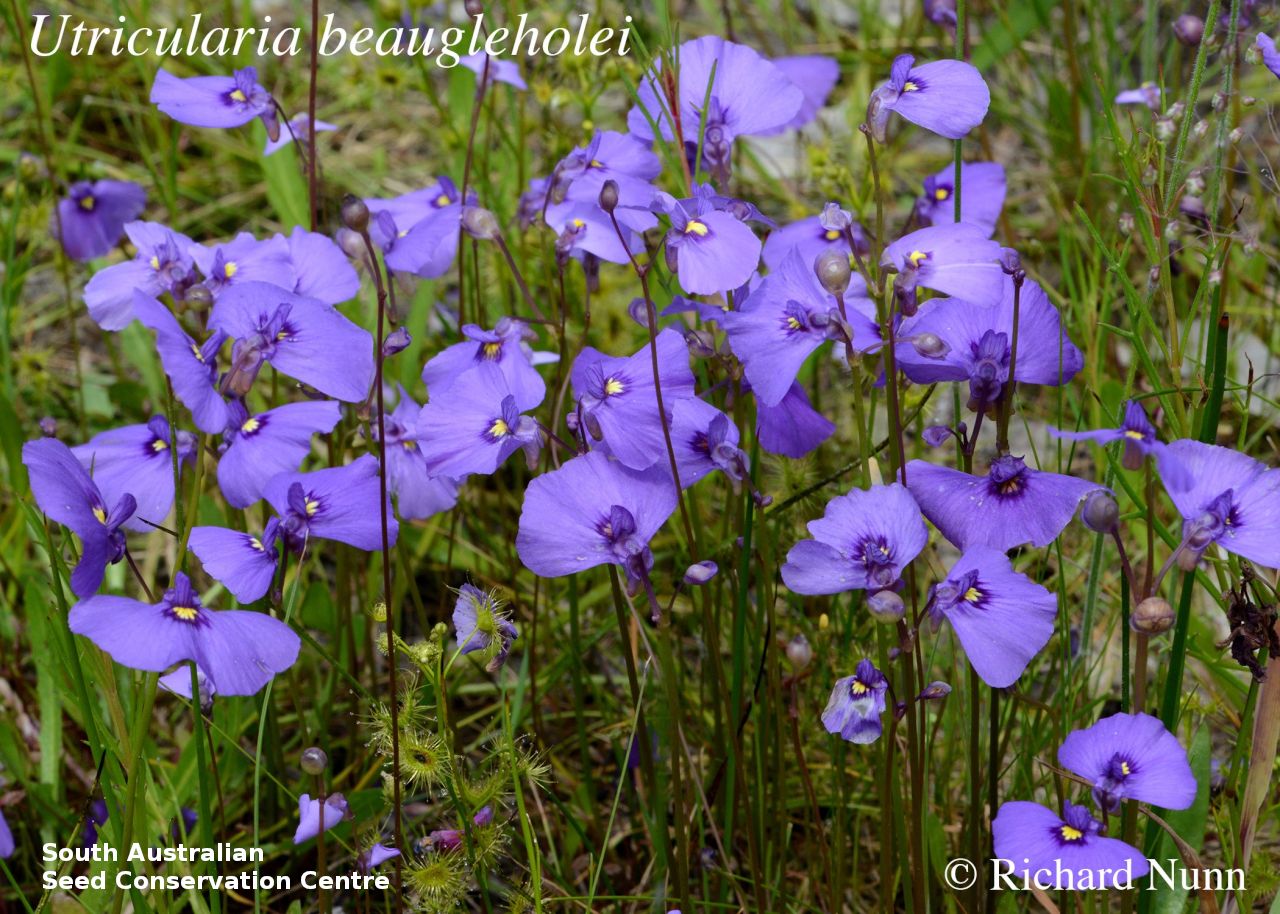
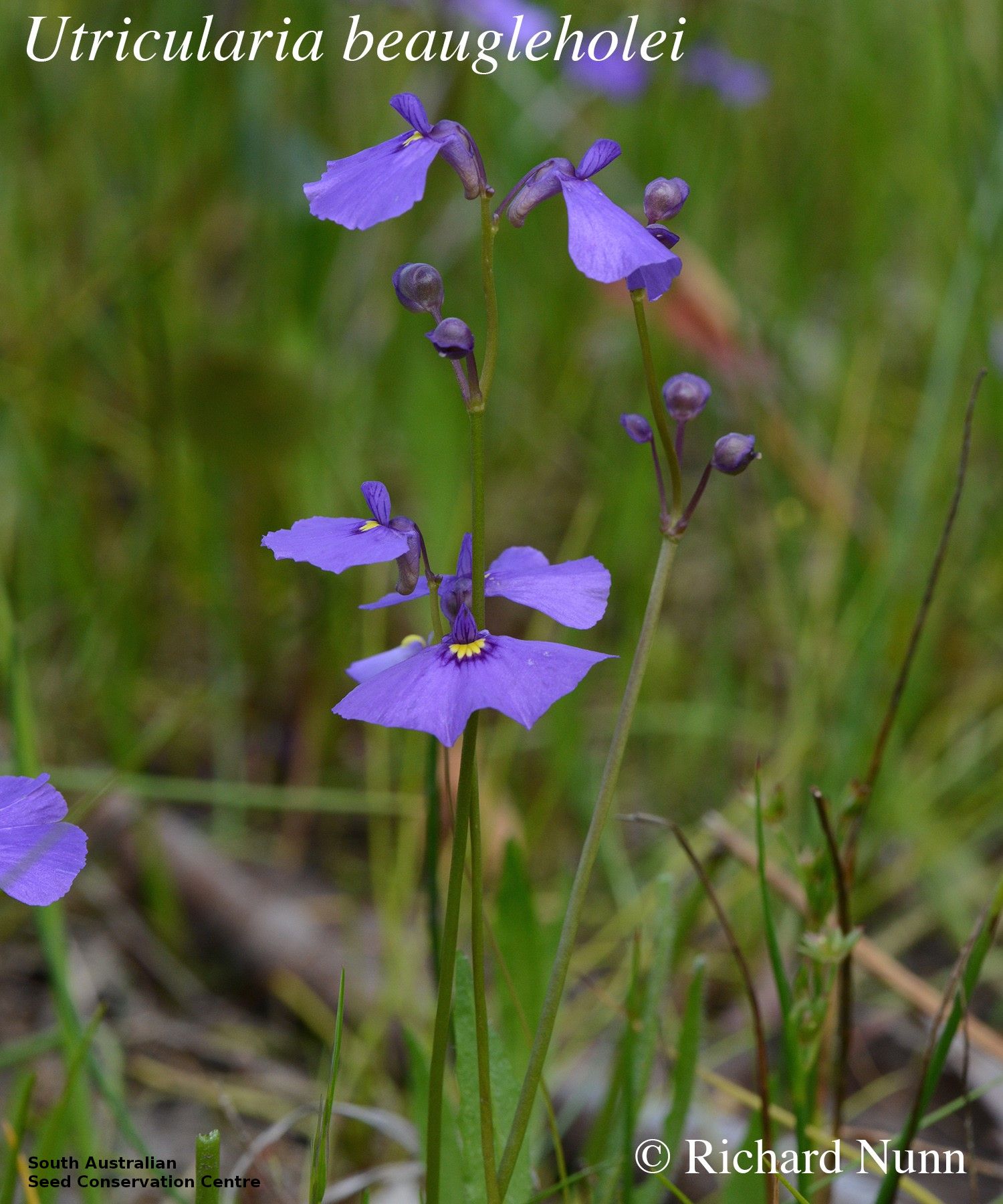
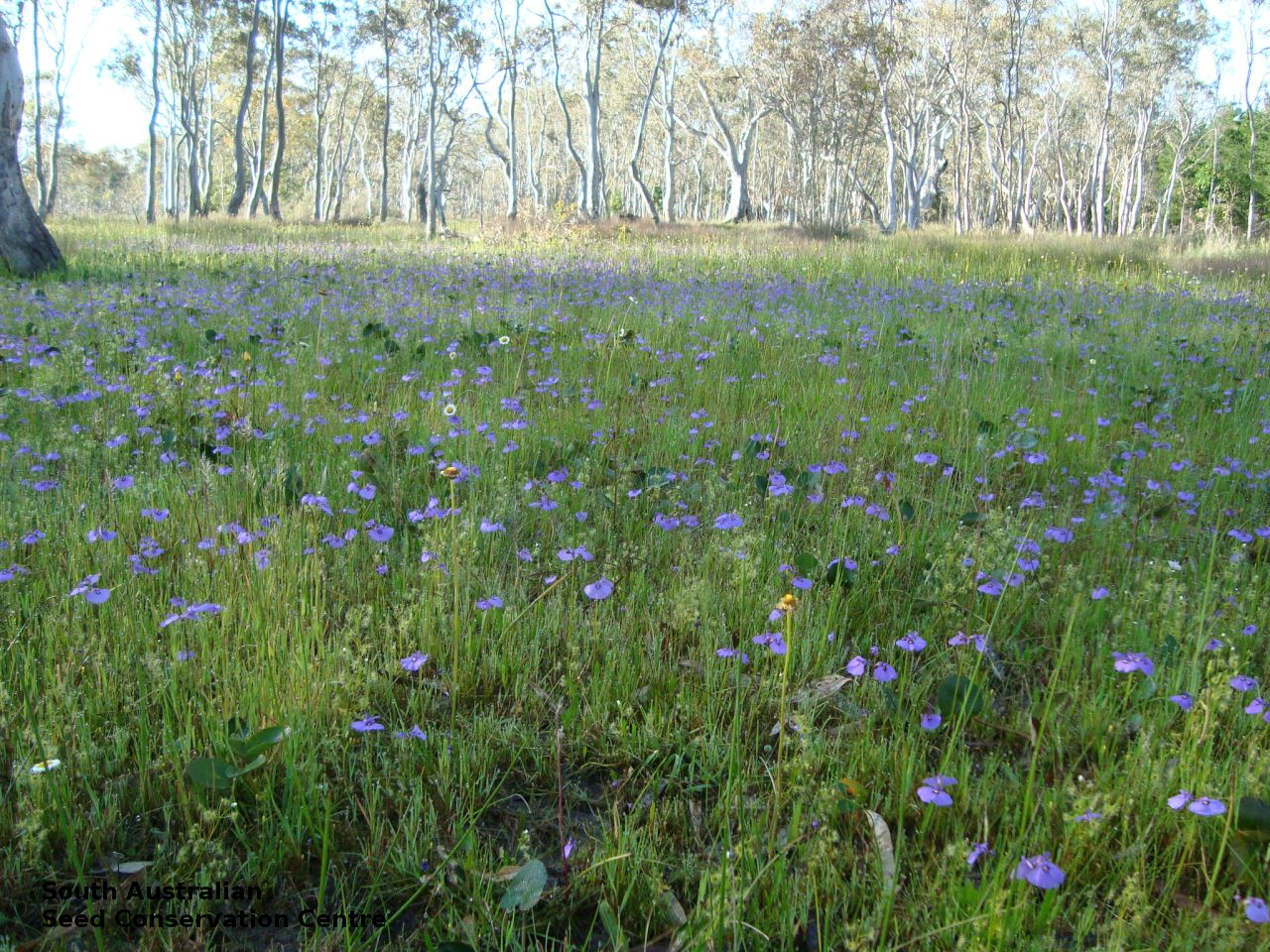
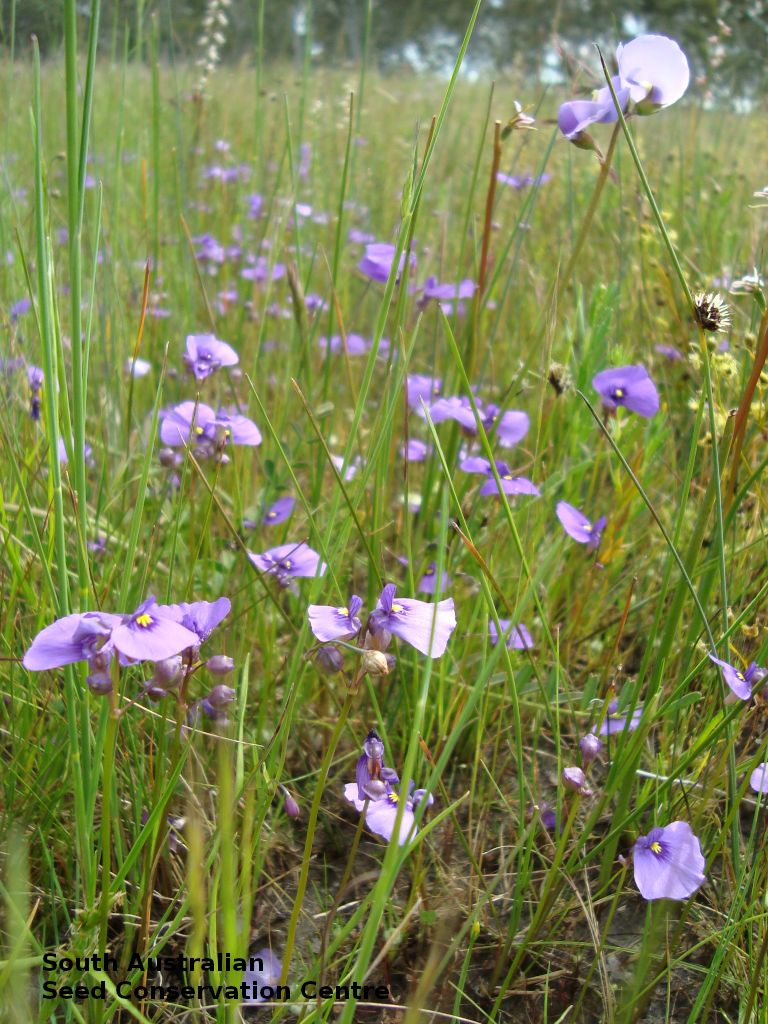
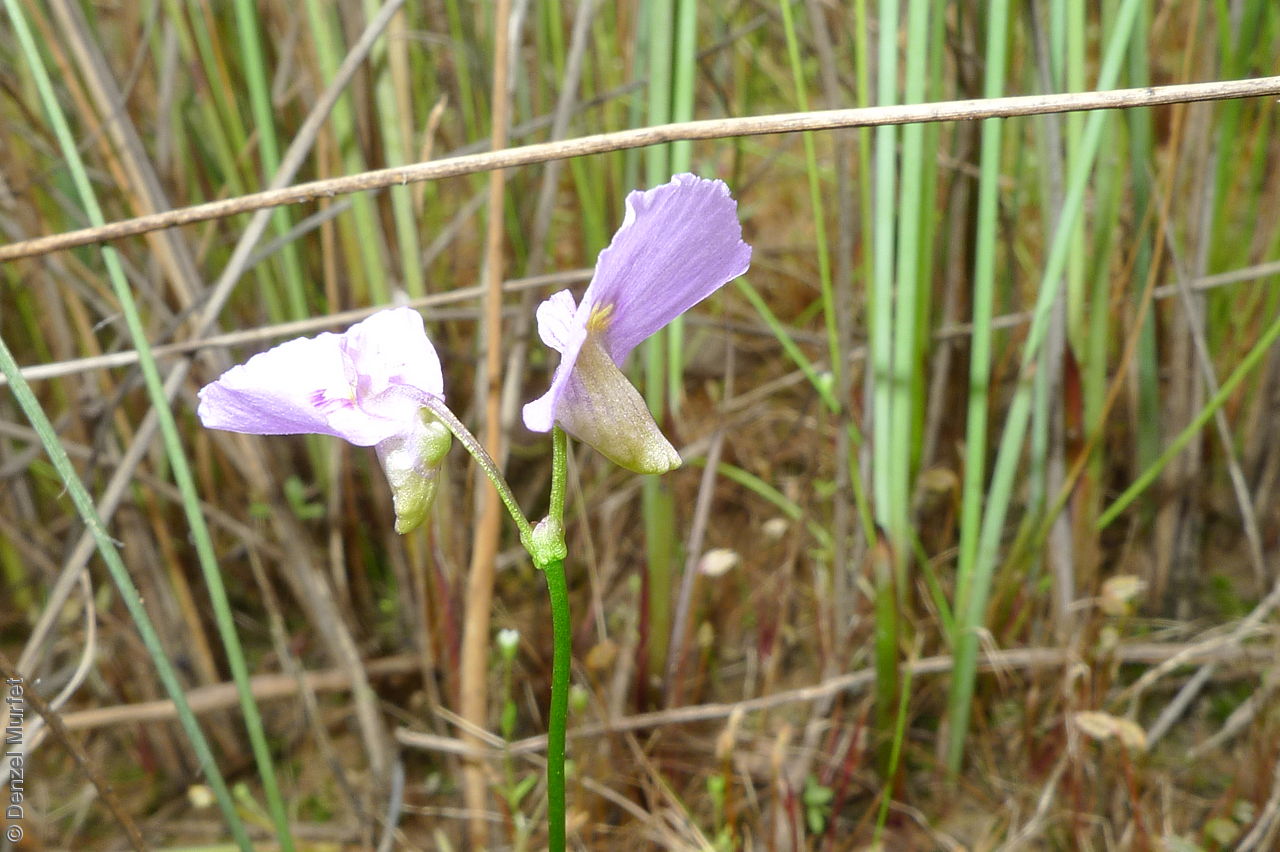
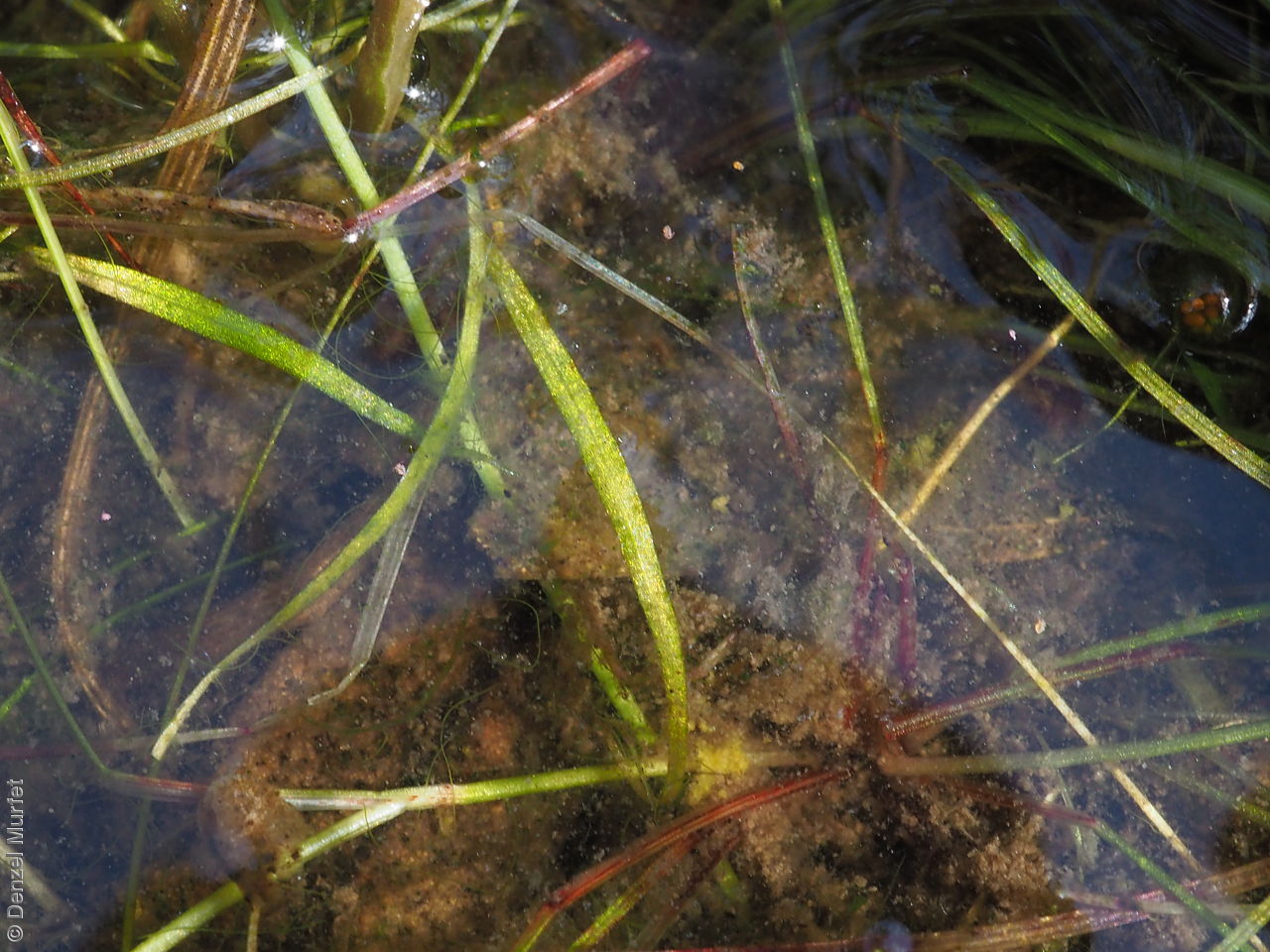
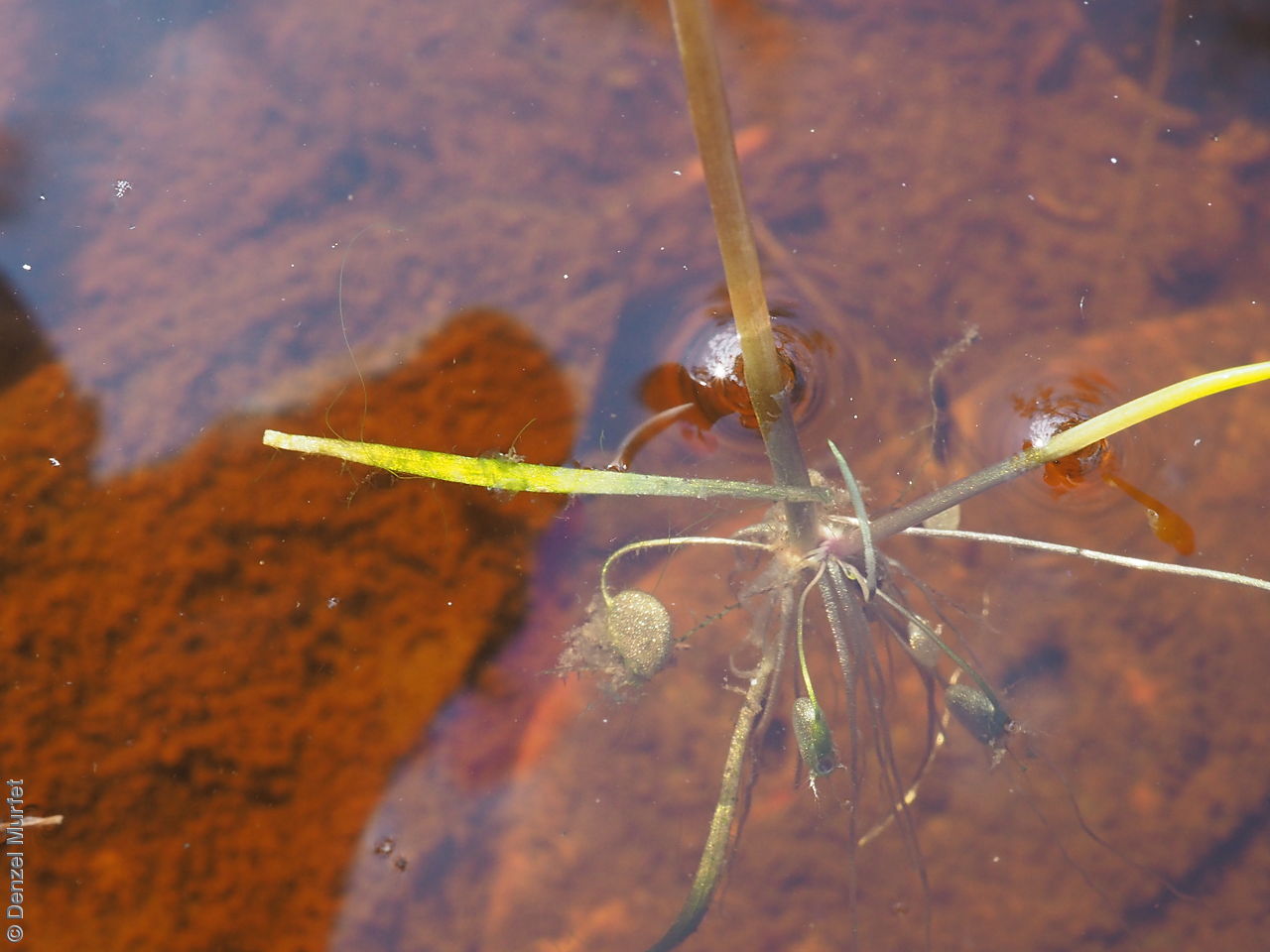
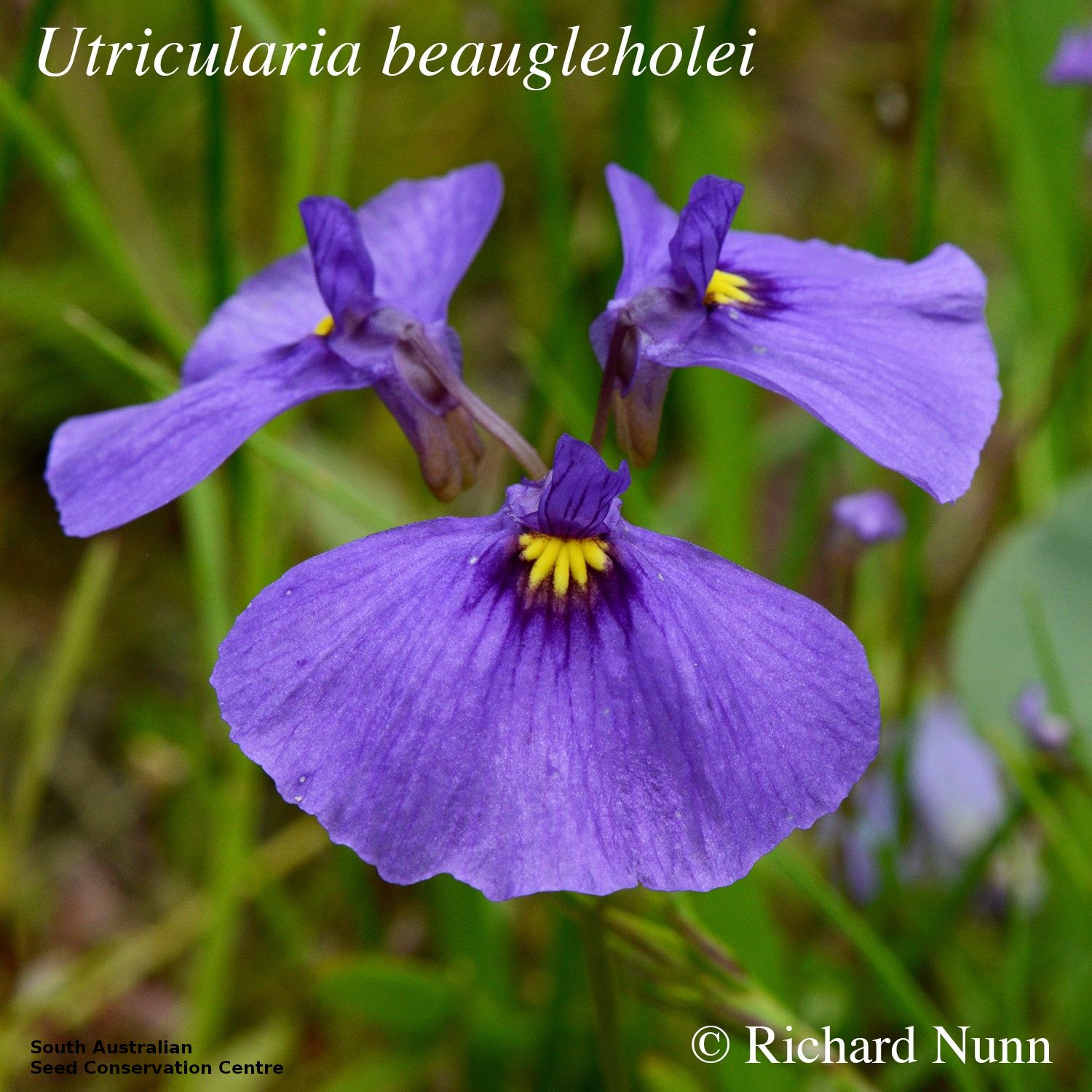
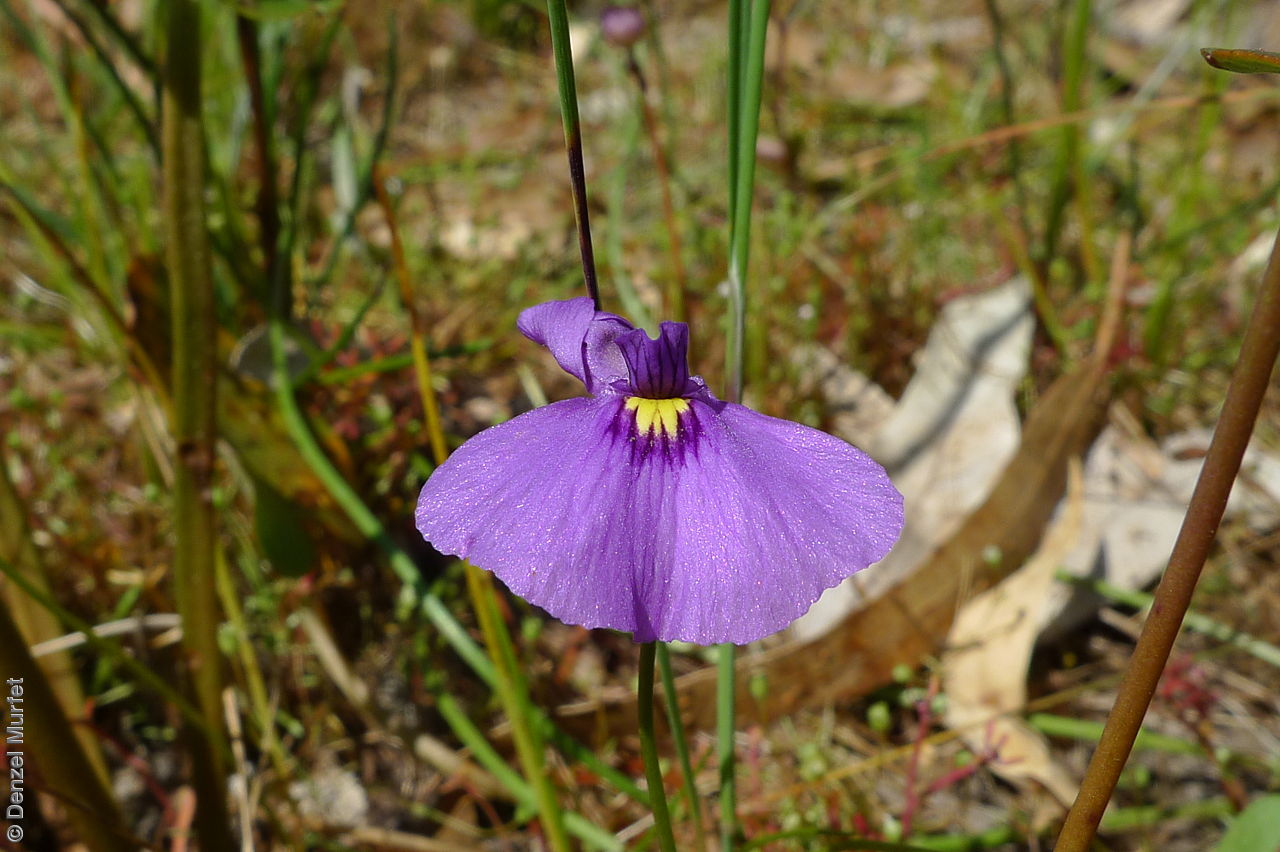
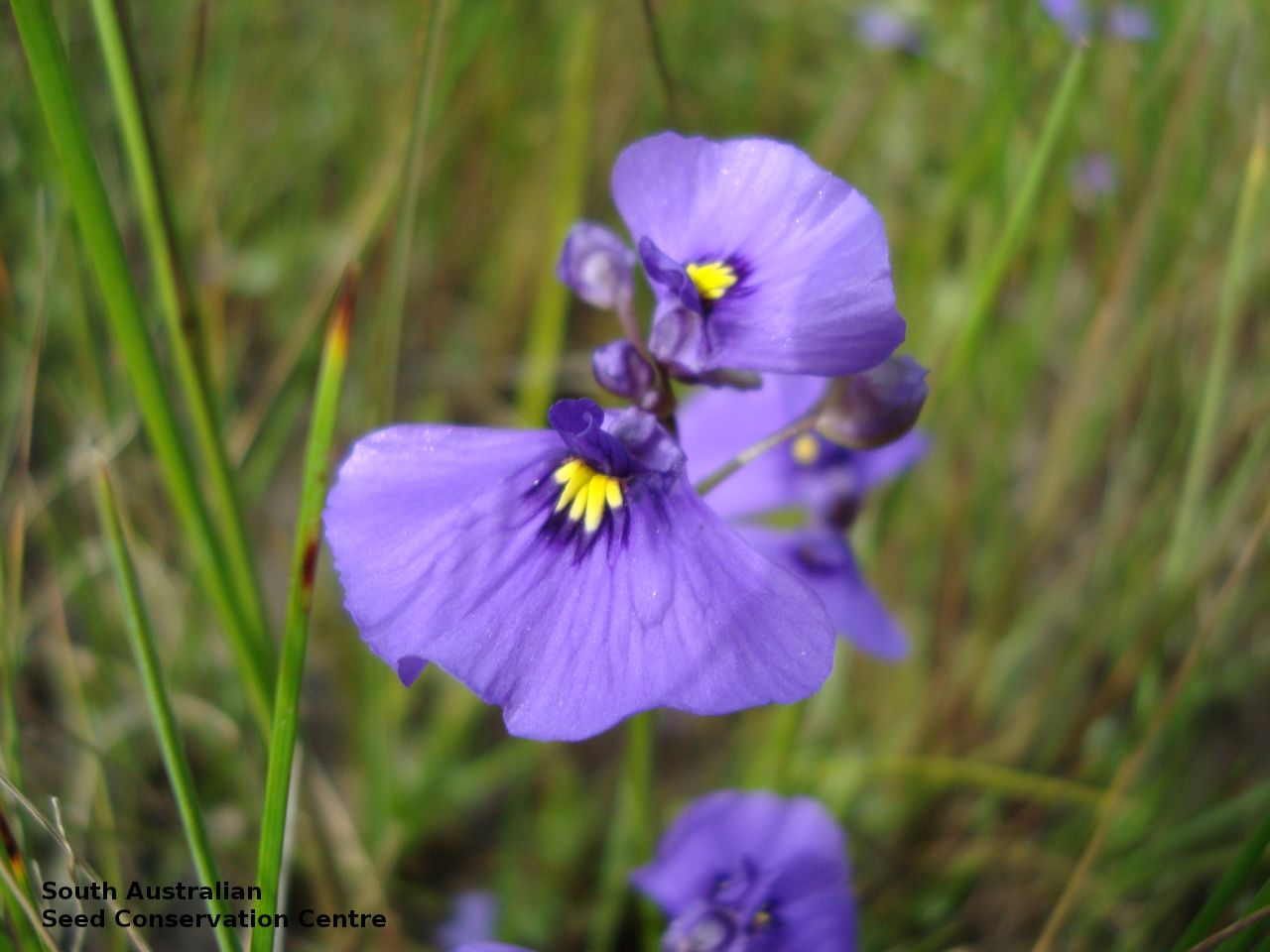
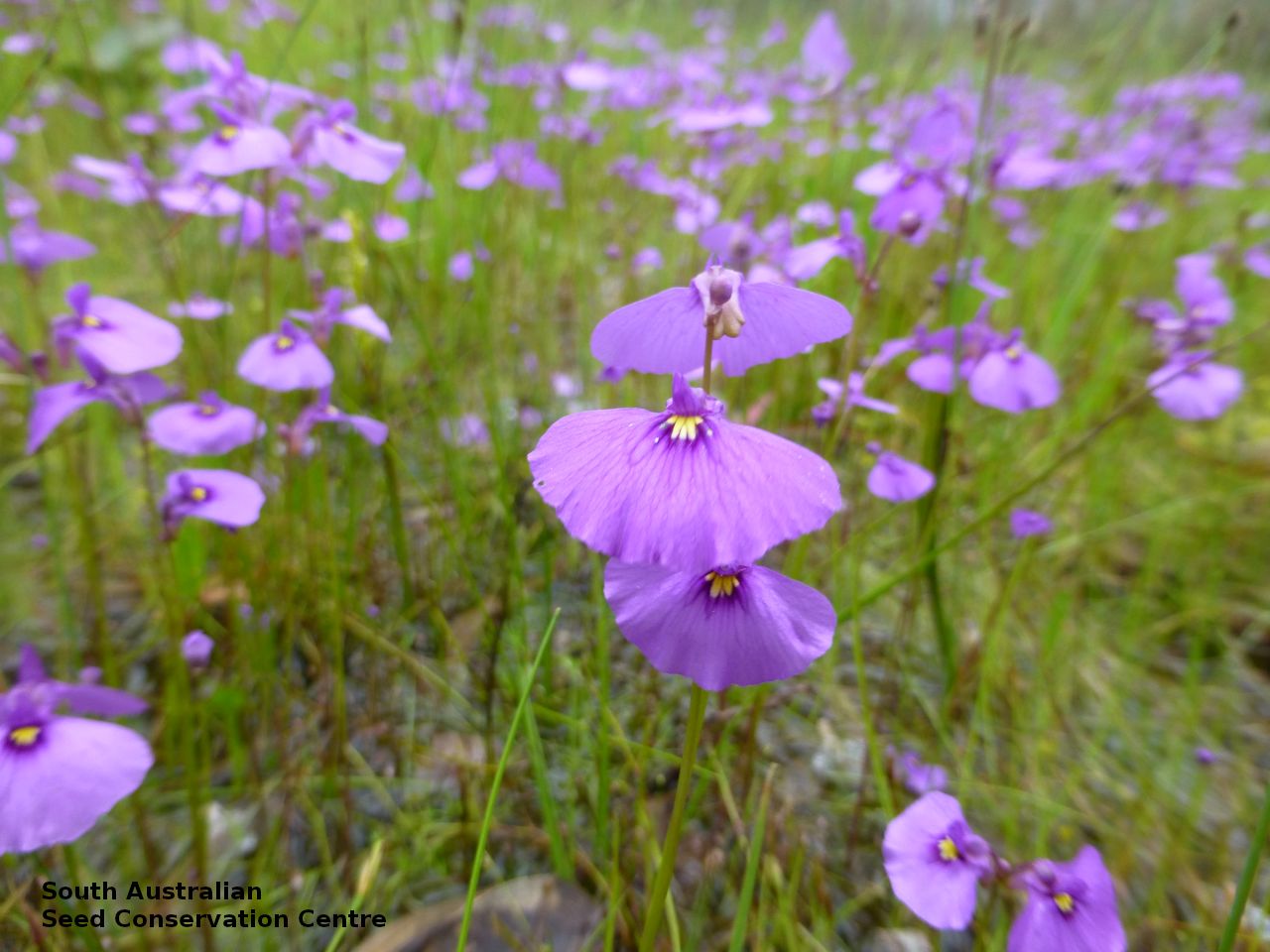

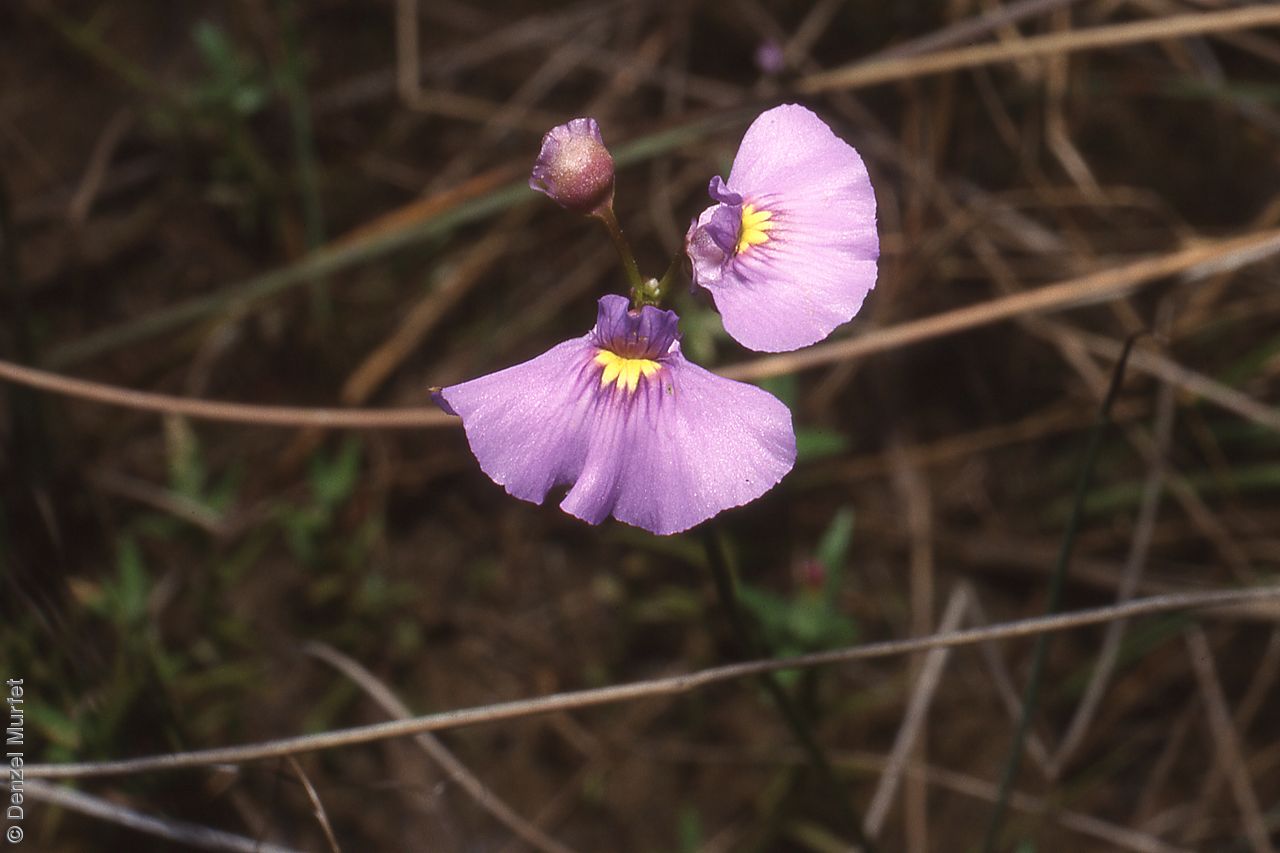
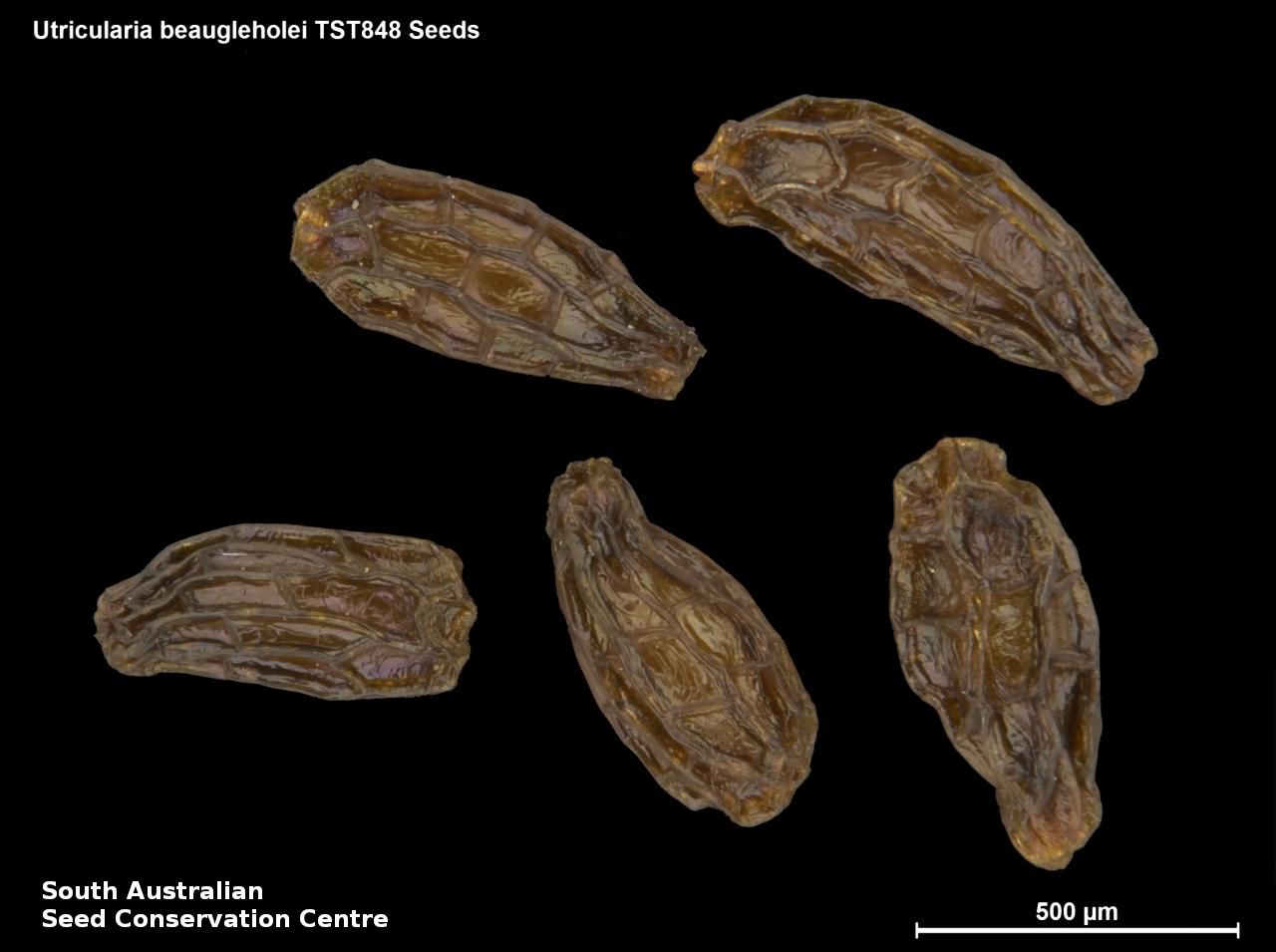


Botanical art
Common names
Beauglehole's Bladderwort
Etymology
Utricularia from the Latin 'utriculus' meaning a small bottle or bladder; referring to a small insect trapping sac attached to the underground leaves. Beaugleholei named after Alexander Clifford (Cliff) Beauglehole (1920–2002), an Australian farmer, botanist, plant collector and naturalist.
Distribution and status
Found in the South-east in South Australia, growing on sandy or clayey soils around swamp margins or other seasonally wet areas. Also found in New South Wales and Victoria. Native. Rare in South Australia. Uncommon in New South Wales. Common in Victoria.
Herbarium region: South Eastern
AVH map: SA distribution map (external link)
Plant description
Small terrestrial herbnnial. Leaves few, rosetted and on stolons, narrow-lanceolate to narrow-linear, to 45 mm long and 1.6 mm wide. Inflorescence erect, 1 to several, erect, 35 cm long, with 1–10 dark violet flowers, upper lip obovate, lower lip much larger, hatchet-shaped to reniform, with 4–11 yellow, slightly raised radiating ridges. Flowering September to March. Fruits are brown globular capsule to 5 mm diameter. Seeds are tiny dark brown ovoid seed to 0.8 mm long and 0.3 mm wide, with a thin mesh-like covering.
Seed collection and propagation
Collect seeds between October and May. Collect mature capsules, those turning a brown colour, fat and containing brown seeds. Can collect individual capsules or break off the whole stem. Place the capsules in a tray and leave to dry for two weeks. Then rub the capsules gently by hand to dislodge the seeds. Use a sieve to separate the unwanted material. Store the seeds with a desiccant such as dried silica beads or dry rice, in an air tight container in a cool and dry place. From one collection, the seed viability was high, at 95%.
| Location | No. of seeds (weight grams) | Number of plants | Date collected | Collection number Collection location | Date stored | % Viability | Storage temperature |
|---|---|---|---|---|---|---|---|
| BGA MSB | 19,000 (0.46 g) 19,000 (0.46 g) | 200+ | 17-Nov-2009 | TST848 South Eastern | 1-Jun-2010 | 95% | +5°C, -18°C |
Number of plants: This is the number of plants from which the seeds were collected.
Collection location: The Herbarium of South Australia's region name.
% Viability: Percentage of filled healthy seeds determined by a cut test or x-ray.